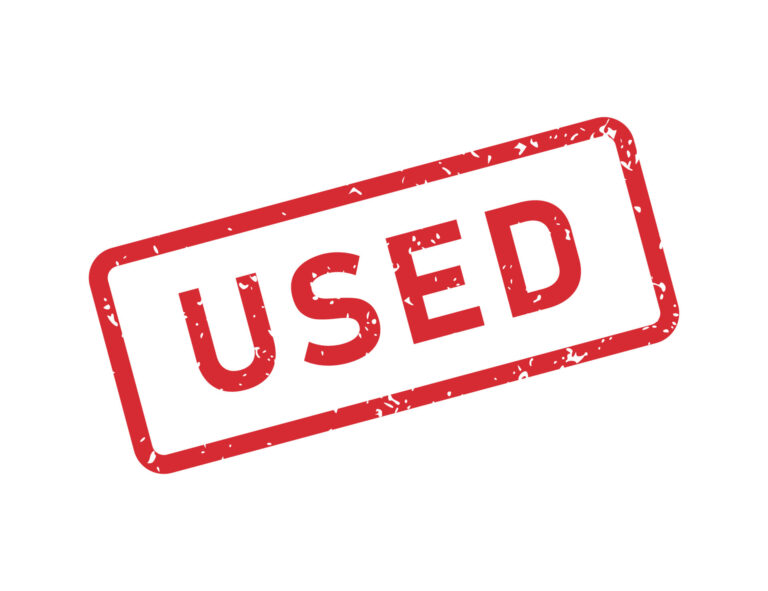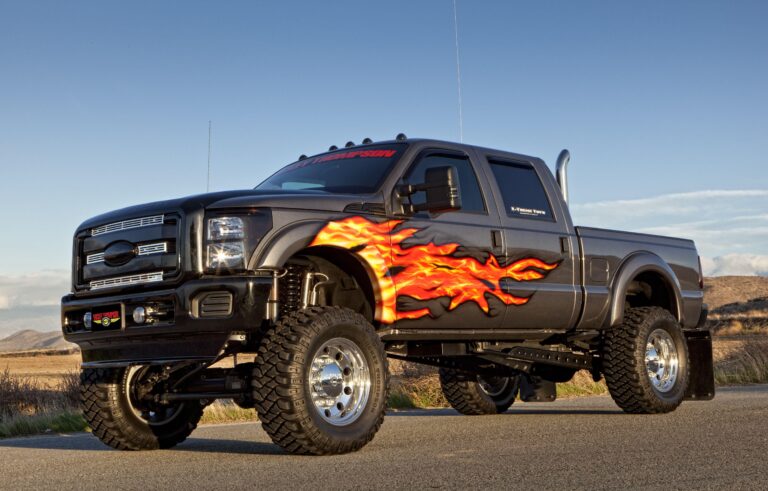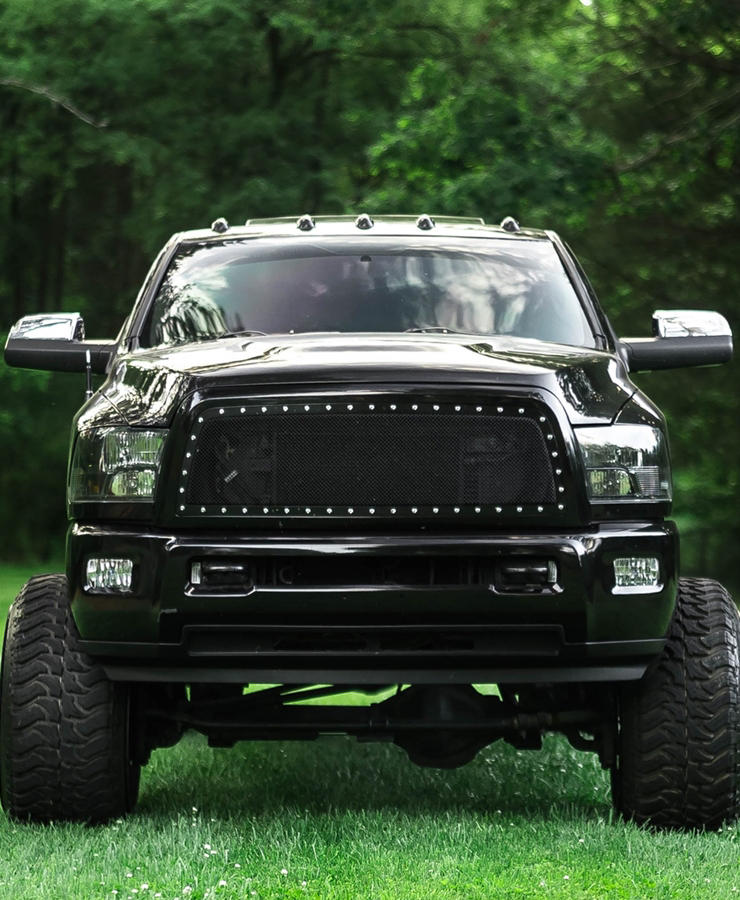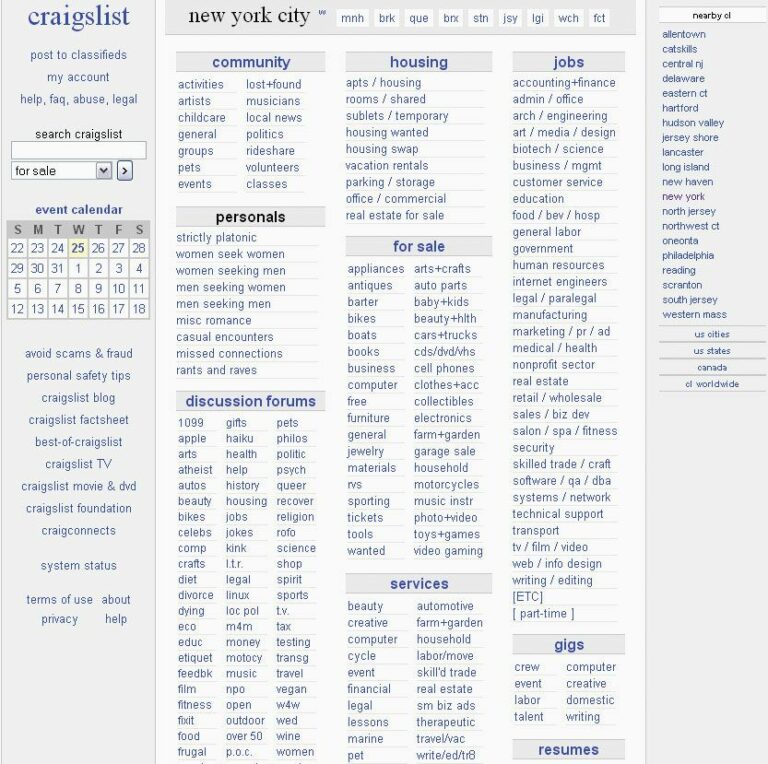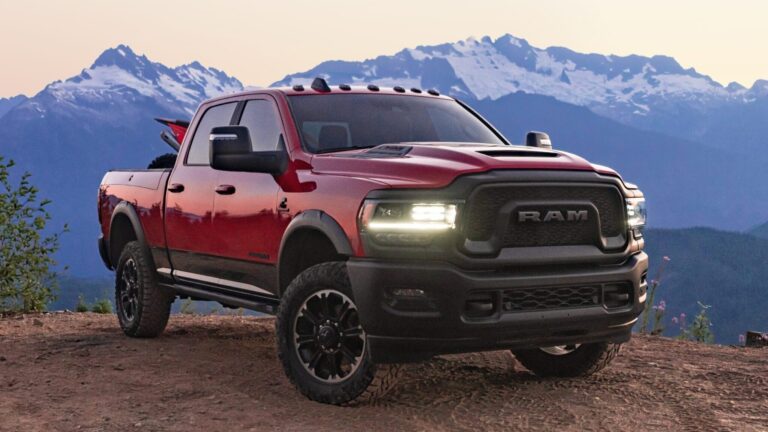Best Trucks For Farrier: The Backbone of Your Mobile Workshop
Best Trucks For Farrier: The Backbone of Your Mobile Workshop cars.truckstrend.com
For the professional farrier, a truck is far more than just a means of transportation; it is the very foundation of their mobile workshop, a crucial business asset that dictates efficiency, professionalism, and ultimately, success. Imagine a farrier arriving at a stable, tools scattered, forge precariously balanced, or worse, getting stuck on a muddy track because their vehicle isn’t up to the task. The right truck is indispensable, serving as a secure storage unit, a power source, a hauling machine, and often, the first impression a client gets of their business.
This comprehensive guide will delve into what makes a truck ideal for a farrier, exploring essential features, top categories, customization options, and critical considerations to ensure your vehicle perfectly supports the unique demands of the farrier profession.
Best Trucks For Farrier: The Backbone of Your Mobile Workshop
The Farrier’s Mobile Workshop: Why Your Truck Matters So Much
A farrier’s daily routine involves traveling to various locations, often rural properties with challenging access, to provide hoof care for horses. This requires hauling a significant amount of specialized equipment, from heavy anvils and portable forges to grinders, propane tanks, horseshoes, and various hand tools. Without a robust and well-organized vehicle, productivity plummets, and the risk of damage to expensive equipment or injury to the farrier increases.
The truck isn’t just a transport vehicle; it’s an extension of the farrier’s shop. It needs to be capable of:
- Carrying Substantial Weight: Anvils alone can weigh hundreds of pounds, not to mention forge, propane, tools, and supplies.
- Towing: While some farriers opt for a fully self-contained truck, many utilize a dedicated farrier trailer for their forge and extensive tools.
- Navigating Diverse Terrain: From paved roads to gravel driveways, muddy fields, and uneven barnyards, reliability in varied conditions is paramount.
- Providing Secure Storage: Protecting valuable tools from theft and the elements is non-negotiable.
- Offering Power Solutions: Many tools require electricity, necessitating inverters or generators.

Investing in the right truck is an investment in your business’s longevity and your personal well-being. It minimizes downtime, enhances your professional image, and ensures you can tackle any job, anywhere.
Essential Features for a Farrier Truck
When evaluating the best trucks for farriers, specific features stand out as non-negotiable or highly beneficial:
- Payload Capacity: This is arguably the most critical specification. Payload refers to the maximum weight a truck can carry in its cab and bed, including passengers, tools, and cargo. Farriers typically carry 1,000 to 3,000+ pounds of equipment. Always check the Gross Vehicle Weight Rating (GVWR) and subtract the truck’s curb weight to determine its actual payload. Overloading is dangerous, illegal, and will quickly wear out your truck.
- Towing Capacity: Even if you primarily use your truck bed, having adequate towing capacity is beneficial. Many farriers pull a specialized farrier trailer, which houses their forge and additional equipment. A good towing capacity ensures you can safely pull your trailer and potentially assist clients with horse trailers if needed.
- Bed Size and Configuration:
- Long Bed (8 ft.): Offers maximum space for anvils, forge, and long stock. Ideal for dedicated setups.
- Short Bed (5.5-6.5 ft.): More maneuverable but requires more vertical organization or a trailer.
- Utility Body/Service Body: These custom beds replace the standard pickup bed with integrated, lockable compartments. They offer superior organization and security, making them highly popular among farriers.

- Storage Solutions: Beyond the bed, secure, weather-resistant storage is vital. This includes:
- Cross-bed toolboxes: For hand tools and smaller items.
- Side-mount boxes: Utilize space along the bed rails.
- Under-bed storage: For less frequently used items.
- Custom shelving and racks: To organize shoes, propane tanks, and specialized tools.
- Power Outlets/Inverters: A farrier frequently uses grinders, drills, and other power tools. A robust inverter (2000W-5000W) or a portable generator is essential for powering these tools directly from the truck.
- Suspension and Drivetrain:
- Heavy-Duty Suspension: Essential for handling constant heavy loads without sagging or compromising ride quality. Look for trucks with a higher Gross Axle Weight Rating (GAWR).
- 4×4/AWD: Crucial for farriers who regularly visit rural properties, navigate muddy pastures, snow, or uneven terrain. This significantly reduces the risk of getting stuck.
- Fuel Efficiency vs. Power: While fuel efficiency is always a consideration, farriers often prioritize power and durability. Diesel engines typically offer superior torque, better fuel economy when heavily loaded or towing, and greater longevity, though they come with higher initial costs and potentially more expensive maintenance. Gasoline engines are generally cheaper upfront and simpler to maintain.
- Cab Comfort and Functionality: Farriers spend long hours on the road. A comfortable cab with ergonomic seating, ample storage for paperwork, and connectivity options (Bluetooth, USB ports) can significantly reduce fatigue and improve productivity.
Top Truck Categories for Farriers
Based on the essential features, certain truck categories consistently rise to the top for farrier work:
-
Full-Size Half-Ton Pickups (e.g., Ford F-150, Ram 1500, Chevy Silverado 1500):
- Pros: Good balance of capability, comfort, and maneuverability. Widely available, excellent aftermarket support, and generally more fuel-efficient than their heavier counterparts. Many offer impressive payload and towing with the right engine and package.
- Cons: Might be at the limit for very heavy, comprehensive setups without a trailer. Payload can be a limiting factor if not equipped with max payload packages.
- Ideal For: Farriers who primarily use a trailer for their heavy forge setup or have a lighter, more streamlined mobile workshop.
-
Heavy-Duty Three-Quarter Ton Pickups (e.g., Ford F-250, Ram 2500, Chevy Silverado 2500HD):
- Pros: The sweet spot for many farriers. Excellent payload and towing capacities, more robust suspension and drivetrain components, designed for consistent heavy work. Often available with powerful diesel engine options.
- Cons: Higher purchase price and running costs (fuel, tires, maintenance) than half-tons. Less nimble in tight spaces.
- Ideal For: Farriers who carry a substantial amount of equipment in the truck bed, frequently tow heavy trailers, or require maximum durability for demanding daily use.
-
One-Ton Pickups (e.g., Ford F-350, Ram 3500, Chevy Silverado 3500HD):
- Pros: Maximum payload and towing capacities. Often available with dual rear wheels (dually) for ultimate stability with heavy loads. The ultimate workhorse.
- Cons: Can be overkill for some operations. Highest purchase and running costs. Largest footprint, making maneuverability challenging in urban or tight farm settings.
- Ideal For: Farriers with exceptionally heavy setups, those who carry multiple anvils, or run a multi-person operation requiring more tools and supplies on board.
-
Utility Body/Service Trucks (e.g., Ford F-Series, Ram, Silverado Chassis with Utility Body):
- Pros: Unparalleled organization and secure storage. Integrated, lockable compartments mean less wasted space and faster access to tools. Professional appearance.
- Cons: Higher initial cost than a standard pickup with a cap. Less versatile for personal use. Can add significant weight to the vehicle.
- Ideal For: Farriers who prioritize organization, security, and a highly specialized, efficient mobile workshop.
Customizing Your Farrier Truck: Beyond the Factory Floor
Once you’ve chosen your base vehicle, customization is key to making it a truly effective farrier rig.
- Truck Caps/Toppers: A high-quality, high-rise truck cap with reinforced roof and side access doors is almost a necessity for protecting tools from weather and theft. Consider a commercial-grade cap for durability.
- Bed Liners and Mats: Protect your truck’s bed from dents, scratches, and chemical spills. A rubber mat can help prevent tools from sliding around.
- Toolboxes and Storage Systems: Invest in durable, lockable toolboxes. Custom shelving, drawers, and compartments can be fabricated to perfectly fit your tools, shoes, and supplies. An anvil stand or mount secured directly to the truck bed or a slide-out tray is often a custom fabrication.
- Inverters and Auxiliary Batteries: Install a robust pure sine wave inverter (2000W+) with a dedicated auxiliary battery bank, isolated from the truck’s starting battery, to power grinders and other tools without draining your main battery.
- Air Compressors: A small, reliable air compressor can be useful for various tasks, from cleaning tools to inflating tires.
- Lighting: Add exterior work lights to the rear or sides of your truck for working in low-light conditions. Interior LED lighting in the truck bed or utility compartments is also highly beneficial.
- Suspension Upgrades: For heavy loads, consider adding air springs or heavier-duty leaf springs to maintain ride height and stability.
Important Considerations When Buying
- New vs. Used: New trucks offer warranties and the latest features but depreciate rapidly. Used trucks offer significant cost savings but require careful inspection for wear and tear. Many farriers start with a reliable used heavy-duty truck.
- Budget: Factor in not just the truck’s purchase price but also insurance, registration, ongoing maintenance, fuel, and the cost of necessary modifications and equipment.
- Maintenance and Running Costs: Diesel trucks, while efficient for heavy loads, often have higher maintenance costs and specialized repair needs. Gas trucks are generally cheaper to maintain. Consider tire wear, especially with heavy loads.
- Resale Value: A well-maintained, properly equipped farrier truck can hold its value, making it a sound business investment.
- Test Drive: Always test drive the truck, ideally with some weight in the bed to simulate a working load. Pay attention to braking, acceleration, handling, and ride quality.
- Safety Features: Modern trucks offer advanced safety features like backup cameras, blind-spot monitoring, and stability control, which are beneficial for navigating busy roads and tight spaces.
Challenges and Solutions
- Overloading: A common pitfall. Solution: Know your truck’s GVWR and payload capacity. Weigh your loaded truck at a public scale to ensure you’re within limits. Prioritize essential tools or consider a trailer if your setup is too heavy for your truck.
- Organization and Clutter: Tools getting lost, damaged, or creating a safety hazard. Solution: Invest in custom storage solutions, designate a place for every tool, and regularly clean and organize your mobile workshop.
- Weather Exposure: Tools rusting, electronics failing due to rain, snow, or extreme temperatures. Solution: A high-quality truck cap or utility body provides excellent protection. Ensure all tools are stored in weatherproof containers.
- Fuel Costs: Significant operating expense. Solution: Plan your routes efficiently to minimize travel time and mileage. Practice good driving habits (avoiding aggressive acceleration/braking). Consider a diesel for better loaded fuel economy, or a gas engine for lower upfront fuel costs.
Table Price: Estimated Investment for Best Trucks For Farrier
It’s important to note that "best" is subjective and depends heavily on individual needs, budget, and the specific farrier setup. Prices fluctuate widely based on the truck’s year, mileage, condition, trim level, and market demand. The table below provides estimated ranges for suitable used trucks and the associated costs for setting them up for farrier work. New trucks would be significantly higher.
| Truck Category | Typical Models (Examples) | Pros for Farriers | Estimated Used Truck Price Range (Suitable Condition, 3-7 years old) | Estimated Farrier Setup/Modification Cost (Tools, Cap/Body, Inverter, etc.) | Total Estimated Investment Range |
|---|---|---|---|---|---|
| Half-Ton Pickup | Ford F-150 (V8/EcoBoost), Ram 1500 (Hemi), Chevy Silverado 1500 (V8) | Balance of power, comfort, and relative efficiency. Good starting point. | $20,000 – $45,000 | $5,000 – $15,000 | $25,000 – $60,000 |
| Three-Quarter Ton Pickup | Ford F-250, Ram 2500, Chevy Silverado 2500HD | Excellent payload & towing, durability, ideal workhorse. | $30,000 – $60,000 | $7,000 – $20,000 | $37,000 – $80,000 |
| One-Ton Pickup | Ford F-350, Ram 3500, Chevy Silverado 3500HD | Maximum capacity, ultimate for heavy loads/trailers. | $40,000 – $75,000 | $10,000 – $25,000 | $50,000 – $100,000 |
| Utility Body/Service Truck | Ford F-Series, Ram, Silverado Chassis with Utility Body | Superior organization, security, integrated storage. | $35,000 – $80,000 | $2,000 – $10,000 (less if body is included in truck price) | $37,000 – $90,000 |
Disclaimer: These are broad estimates. The actual cost will depend on specific models, trim levels, engine choices, condition of used vehicles, and the extent of customization. Farrier tools themselves (anvils, forges, hand tools) represent a significant separate investment.
Frequently Asked Questions (FAQ) about Best Trucks For Farrier
Q: Do I really need a 4×4 truck as a farrier?
A: While not every farrier needs one, a 4×4 drivetrain is highly recommended. Many farriers operate in rural areas, dealing with unpaved roads, muddy fields, snow, or uneven terrain. A 4×4 significantly reduces the risk of getting stuck, saving you time, frustration, and potential towing costs.
Q: Is a diesel or gasoline truck better for a farrier?
A: Both have pros and cons. Diesel engines offer superior torque for heavy loads and towing, better fuel economy when working hard, and often longer lifespans. However, they typically have higher upfront costs, more expensive maintenance, and sometimes slower warm-up times. Gasoline engines are cheaper to buy and maintain, and generally quieter, but may not offer the same pulling power or loaded fuel efficiency. For heavy, consistent work, many farriers prefer diesel.
Q: How important is payload capacity for a farrier truck?
A: Extremely important. Farrier tools, especially anvils, forges, and propane tanks, are very heavy. Exceeding your truck’s payload capacity is dangerous, can lead to premature wear on components (brakes, suspension, tires, transmission), and can void your warranty or insurance. Always know your truck’s payload rating and weigh your loaded vehicle if unsure.
Q: Can I use a regular truck bed, or do I need a utility body?
A: A regular truck bed with a high-quality cap and well-organized toolboxes is a common and effective setup for many farriers. However, a utility body (service body) offers integrated, lockable, and highly organized compartments that are purpose-built for tools and supplies. It often provides superior security and weather protection, making it an excellent choice for those who can afford the higher initial investment.
Q: What’s the most crucial piece of equipment to put in my farrier truck?
A: While all your tools are vital, a reliable and appropriately sized anvil is the centerpiece of a farrier’s mobile forge setup. Beyond that, a robust inverter/power source for grinders and other power tools is absolutely essential for efficient work on the go. Secure, organized storage for all your tools follows closely behind.
Q: How often should I maintain my farrier truck?
A: Given the heavy loads, frequent starts/stops, and diverse driving conditions, your farrier truck needs diligent maintenance. Follow the manufacturer’s recommended service schedule, paying close attention to oil changes, tire rotations, brake inspections, and fluid checks. Consider more frequent intervals for components like brakes and suspension if you consistently haul maximum loads. Regular cleaning and organization of the interior and bed will also help prolong its life and efficiency.
Conclusion
The choice of truck is a pivotal decision for any farrier. It directly impacts your daily operations, your professional image, and your long-term business success. By carefully considering factors like payload and towing capacity, storage solutions, drivetrain, and the potential for customization, you can select or build a mobile workshop that not only meets the rigorous demands of the farrier profession but also serves as a reliable, efficient, and profitable asset for years to come. The right truck isn’t just a vehicle; it’s the stable foundation upon which your farrier business thrives.


